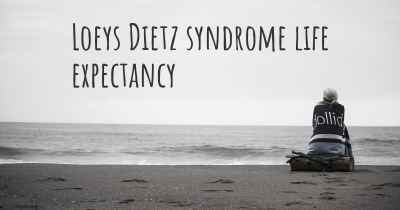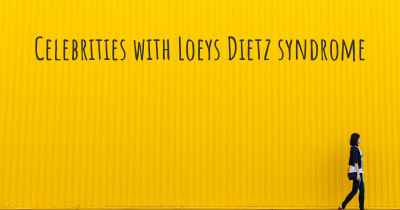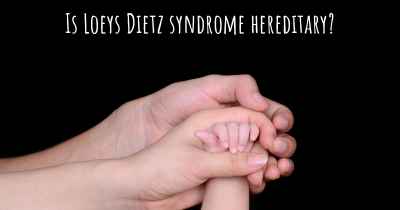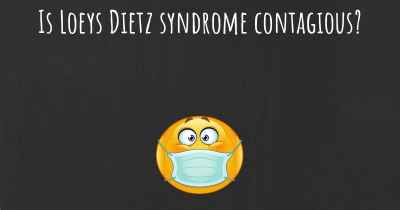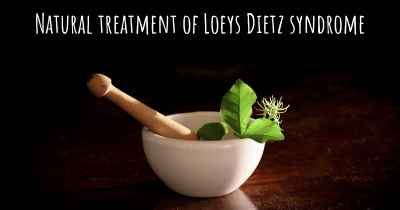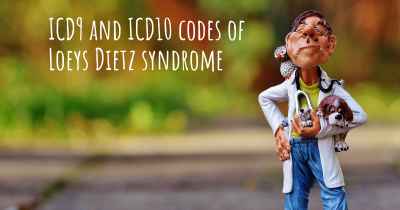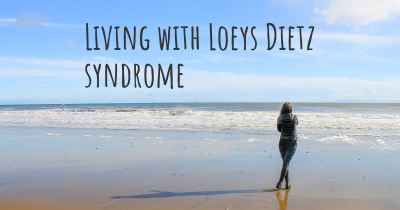Which are the causes of Loeys Dietz syndrome?
See some of the causes of Loeys Dietz syndrome according to people who have experience in Loeys Dietz syndrome
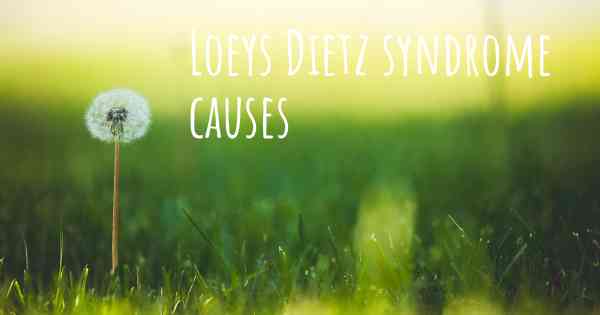
Loeys-Dietz syndrome is a rare genetic disorder that affects the connective tissues in the body. It was first identified in 2005 by Dr. Bart Loeys and Dr. Hal Dietz. This syndrome is characterized by a variety of symptoms, including abnormalities in the heart, blood vessels, bones, and other organs. Understanding the causes of Loeys-Dietz syndrome is crucial for diagnosis, treatment, and management of the condition.
Genetic Mutations: The primary cause of Loeys-Dietz syndrome is genetic mutations. Specifically, mutations in the genes TGFBR1 and TGFBR2 have been identified as the main culprits. These genes provide instructions for making proteins that are involved in the signaling pathway of transforming growth factor-beta (TGF-β). Mutations in these genes disrupt the normal functioning of TGF-β signaling, leading to the development of Loeys-Dietz syndrome.
Autosomal Dominant Inheritance: Loeys-Dietz syndrome follows an autosomal dominant pattern of inheritance. This means that a person only needs to inherit one copy of the mutated gene from either parent to develop the syndrome. If one parent has Loeys-Dietz syndrome, there is a 50% chance of passing the mutated gene to each child. However, in some cases, the syndrome may occur due to spontaneous genetic mutations, without any family history.
Variable Expressivity: Loeys-Dietz syndrome exhibits variable expressivity, meaning that the severity and range of symptoms can vary greatly among affected individuals. Even within the same family, individuals may experience different manifestations of the syndrome. This variability is thought to be influenced by additional genetic and environmental factors that modify the effects of the primary genetic mutation.
Pathophysiology: The genetic mutations in TGFBR1 and TGFBR2 disrupt the TGF-β signaling pathway, which plays a crucial role in regulating cell growth, proliferation, and differentiation. TGF-β signaling is involved in the development and maintenance of various tissues, including blood vessels, heart, and skeletal system. Dysregulation of this pathway leads to abnormal development and functioning of these tissues, contributing to the characteristic features of Loeys-Dietz syndrome.
Additional Genetic Factors: While mutations in TGFBR1 and TGFBR2 are the primary causes of Loeys-Dietz syndrome, other genetic factors may also contribute to the development and progression of the condition. Researchers have identified mutations in other genes, such as SMAD3 and SKI, that can modify the effects of TGF-β signaling pathway mutations and influence the severity of the syndrome.
Environmental Factors: Although the exact role of environmental factors in Loeys-Dietz syndrome is not fully understood, it is believed that certain environmental factors may interact with genetic mutations to influence the development and progression of the syndrome. These factors may include exposure to certain chemicals, toxins, or infections during critical periods of development.
Conclusion: Loeys-Dietz syndrome is primarily caused by genetic mutations in the TGFBR1 and TGFBR2 genes, disrupting the TGF-β signaling pathway. The syndrome follows an autosomal dominant pattern of inheritance, but spontaneous mutations can also occur. Variable expressivity and the influence of additional genetic and environmental factors contribute to the diverse range of symptoms observed in affected individuals. Understanding the underlying causes of Loeys-Dietz syndrome is essential for genetic counseling, early diagnosis, and appropriate management of the condition.
Copied from ghr.nlm.nih.gov
Loeys-Dietz syndrome is a disorder that affects the connective tissue in many parts of the body. Connective tissue provides strength and flexibility to structures such as bones, ligaments, muscles, and blood vessels.
There are five types of Loeys-Dietz syndrome, labelled types I through V, which are distinguished by their genetic cause. Regardless of the type, signs and symptoms of Loeys-Dietz syndrome can become apparent anytime from childhood through adulthood, and the severity is variable.
Loeys-Dietz syndrome is characterized by enlargement of the aorta, which is the large blood vessel that distributes blood from the heart to the rest of the body. The aorta can weaken and stretch, causing a bulge in the blood vessel wall (an aneurysm). Stretching of the aorta may also lead to a sudden tearing of the layers in the aorta wall (aortic dissection). People with Loeys-Dietz syndrome can also have aneurysms or dissections in arteries throughout the body and have arteries with abnormal twists and turns (arterial tortuosity).
Individuals with Loeys-Dietz syndrome often have skeletal problems including premature fusion of the skull bones (craniosynostosis), an abnormal side-to-side curvature of the spine (scoliosis), either a sunken chest (pectus excavatum) or a protruding chest (pectus carinatum), an inward- and upward-turning foot (clubfoot), flat feet (pes planus), or elongated limbs with joint deformities called contractures that restrict the movement of certain joints. A membrane called the dura, which surrounds the brain and spinal cord, can be abnormally enlarged (dural ectasia). In individuals with Loeys-Dietz syndrome, dural ectasia typically does not cause health problems. Malformation or instability of the spinal bones (vertebrae) in the neck is a common feature of Loeys-Dietz syndrome and can lead to injuries to the spinal cord. Some affected individuals have joint inflammation (osteoarthritis) that commonly affects the knees and the joints of the hands, wrists, and spine.
People with Loeys-Dietz syndrome may bruise easily and develop abnormal scars after wound healing. The skin is frequently described as translucent, often with stretch marks (striae) and visible underlying veins. Some individuals with Loeys-Dietz syndrome develop an abnormal accumulation of air in the chest cavity that can result in the collapse of a lung (spontaneous pneumothorax) or a protrusion of organs through gaps in muscles (hernias). Other characteristic features include widely spaced eyes (hypertelorism), eyes that do not point in the same direction (strabismus), a split in the soft flap of tissue that hangs from the back of the mouth (bifid uvula), and an opening in the roof of the mouth (cleft palate).
Individuals with Loeys-Dietz syndrome frequently develop immune system-related problems such as food allergies, asthma, or inflammatory disorders such as eczema or inflammatory bowel disease.
Posted May 12, 2019 by Derek 4050
Posted May 14, 2019 by Glenn 2500
Posted May 16, 2019 by Vicki 1800
